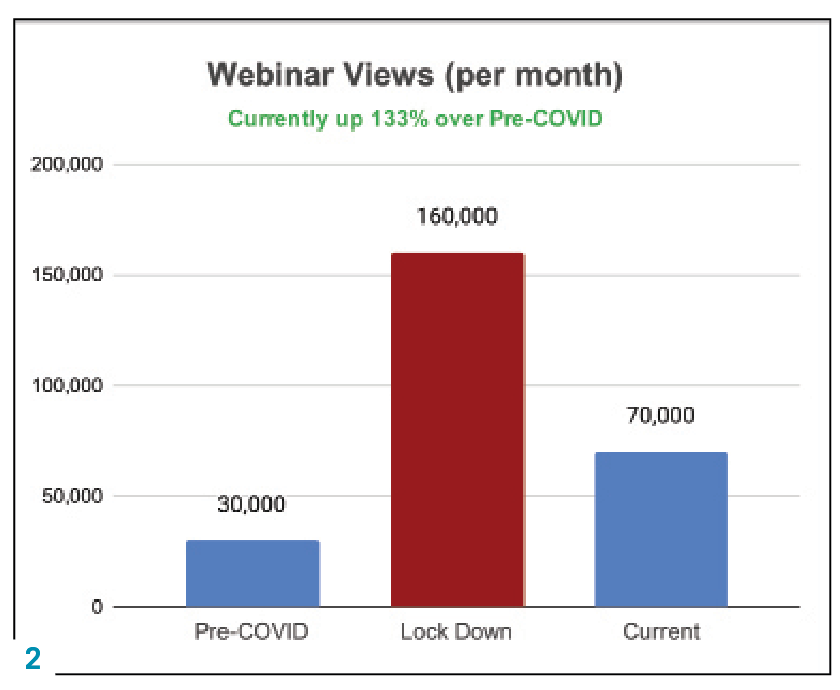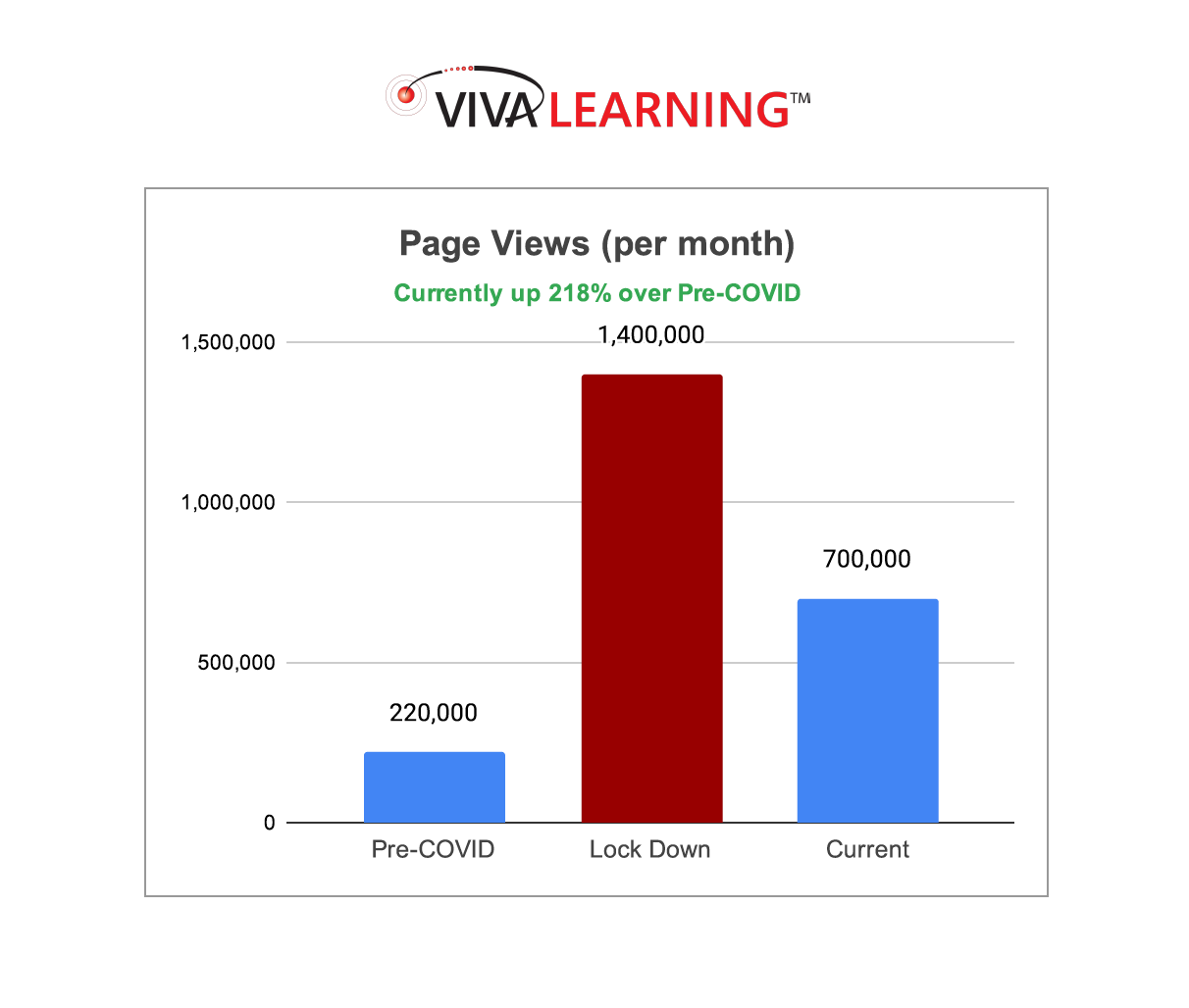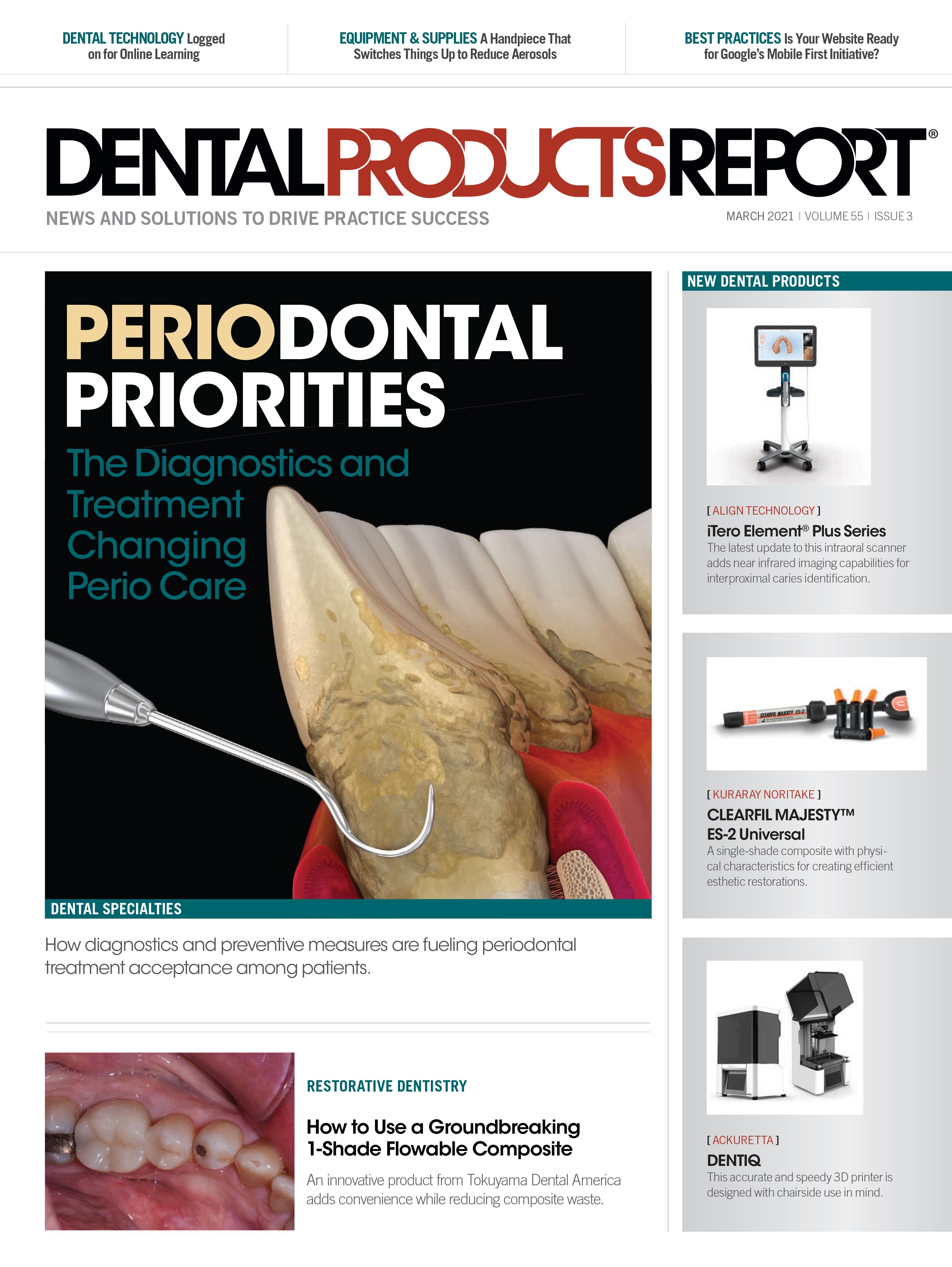More than 300 million students worldwide had their education disrupted by the coronavirus disease 2019 (COVID-19) pandemic, according to Pearson, a global learning company. That includes K-12, higher education, and continuing education (CE) learners.
In the July 2020 issue of the European Journal of Dental Education, researcher Xiaoqiang Liu and his colleagues wrote about the impact of COVID-19 on live online dental CE, finding not just sustained growth but acceptance as the format aligns with dentists’ need to be continuously updated on rapidly changing science and technology.1 We have also seen this trend with United States-based dentists, relying more on digital resources and education to keep connected to best practices, to innovation, and to one another.
As the country and our profession begin the transition toward the new normal, I wanted to talk with 2 individuals privy to dentists’ changing habits and preferences regarding online CE. Phil and Eric Klein are chief executive officer and chief operating officer, respectively, of Viva Learning, an industrywide dental CE platform. It seems like dental journals, companies, and associations are clamoring to claim a piece of the online education pie, but Viva is one of the few organizations with a true long view of this trend and how COVID 19-specific dynamics will affect the profession. In this interview, they will share some of what they have seen in the past year.
Lou Shuman: In a recent presentation you piqued my interest when you started showing charts and data reflecting audience engagement during the past several months. I think you have something to teach us about how community perceptions and behavior regarding digital learning are changing.
Eric Klein: We had about 40,000 unique visitors per month before COVID-19 and it jumped up to 250,000 during the lock down period. Today, we fluctuate between 85,000 and 90,000. One part of this story is, of course, the COVID-19-related content we offered. Phil recognized early on that we needed to not only make the content prominent but also strong. He worked with our top KOLs [key opinion leaders], infection control experts, and different industry leaders to produce this content through webinars and podcasts. That took off and at one of the high points, we had something like 700 new sign-ups a day. It was unbelievable.
What Makes Digital Learning Successful?
Quality of Content
No substitute for the presentation being excellent. The right instructors, interesting research, and a smooth presentation cannot be undervalued.
Easy to Access
Not everyone is a digital native, so it is critical to make online onboarding as seamless as possible. The content is brilliant, but the interface should be simple to understand.
Knowing Your Audience
Content focused on challenges people face every day will always find an audience. Focus on stressors and clinical challenges, but also goals.
The other factor, of course, was the cancellation of in-person events that people are accustomed to. COVID-19 was an opportunity for them to learn how easy online learning can be, and they’ve stuck around. Some of our traffic were existing subscribers who were more active, but the majority were new.
Phil Klein: What is most compelling to me is how the data reflect a change in how we learn; that traffic didn’t just go back to its original state. What this year has introduced around quality online education is something that will stay with us going forward.
Pre-COVID-19, we were seeing an upward trend of engagement and new accounts being created. Questions were about our accreditation with different states or whether the sessions counted as live interactive. In the 18 months before the pandemic, our support emails were tripling. You could say these learners were already jogging around the track and COVID-19 forced them to speed up.
EK: We’ve actually seen an uptrend since October, which is surprising. But it’s likely people finishing off required CE credits for the year.
But not all our increases in webinar views can be attributed to CE. Many people aren’t taking the CE exams but just coming for the education. We did a survey in the winter 2019 and asked users how likely they were to come back to Viva Learning for a CE webinar, even if they’d fulfilled their CE requirements. Approximately 80% said that they were likely or very likely to come back to Viva, even though they met their requirement. It made it clear to us that for dental professionals, vivalearning.com isn’t just a means to a CE certificate end but a dental information platform. Yes, they can get CE credits there, but that wasn’t as much of a driving force as we thought before the survey.
PK:Our consistently rising web traffic tells us we’ve created an educational experience that’s positive both in CE quality and user interface. If the user experience isn’t positive, the CE aspect becomes less attractive, and this results in professionals looking elsewhere.
When we developed our latest e-learning platform, Eric and I and others sat down in the boardroom for weeks at a time and reiterated: “Listen, we have to make this website very simple. We don’t want our users to jump through a ton of hoops.” So we built the site so initially no logins are required; everything on Viva Learning is at the dentist’s fingertips—you click it and you watch it. If you like it, that’s great. We don’t know who you are, although we are getting metrics as far as unique IP addresses and general site activity data. As far as the individual user, we collect their information only when they decide to create their CE account. At this point, we request their name and contact information so we can administer their CE activity. It can’t be overstated what a huge factor that is in getting a large number of people to utilize digital learning.
LS: You’ve also worked to expand beyond webinars and newsletters. Tell me about the Viva Learning podcast, Dental Talk.
EK: The podcasts really have taken off considering it is an offering we didn’t even have 2 years ago … we had arranged for someone else to host the podcast, but when the arrangement wasn’t going to work, Phil offered to do the first few to get us started. Meanwhile, we’re 300 episodes in and Phil is the host. He loves it.
PK: Yes, it’s been doing well. When you combine the engagement on the various podcast platforms—Spotify, Apple, etc—we’re getting almost the same amount of engagement as what we get on the learning network. On a given 30-day period, we’re between 20,000 and 28,000 listens per month from that 300-episode library.
LS: If you had a survey asking the average person, Pre-COVID-19, “What is Zoom?” maybe 10 people would know. After lockdown, it’s become its own verb and usage is through the roof. People realize it is a way of life. That’s exactly what I see happening with Viva and virtual learning. You are proof that this is going to become a foundation of how we interact in the dental community.
PK: Absolutely. Early on, some of the pushback from manufacturers who sponsor our CE were around concerns that the audience would be all young people just out of dental school. Even prepandemic, but certainly now, that just isn’t the case. We’re seeing many people in their 50s and early 60s who are using Viva Learning.
What’s been interesting to observe is not just the age range, but how younger users are logging in from unexpected platforms. For example, about 40% of the interaction that we get on live CE webinars is through a cell phone—that’s incredible. We have dental professionals typing in questions to the speaker while they’re on a walk, addressing that speaker while they’re out with their dog. That’s where we are right now.
LS: In dentistry there are 2 different marketplaces—the progressive community and the traditional community. For a company like yours to serve the progressive community is a piece of cake, but it’s been amazing to watch you work to alleviate the fear factor with the traditional community. One thing that makes that possible is your relationship with KOLs, right? People you could previously only see on a podium are now available on demand through your library.
PK: Eric and I are used to that aspect of it, but to hear it from your perspective, it really is an amazing thing to be able to go to an online platform, type in a name like Mary Govoni and have access to her courses. She’s someone who has been invaluable in her COVID-19 coverage. She follows the CDC [Centers for Disease Control and Prevention] guidelines published daily and makes sense of them in terms of the dental practice, redefining these complex, convoluted rules that apply to medical and distilling it down to dental. Everything you see under our Infection Control section from her is not only up-to-date but in 2 or 3 formats: eBook, webinar, and podcast.
LS: That’s the way to go and that’s the value you provide to the progressive and traditional marketplaces. It is a huge priority of mine and something I hope more people consider in their own educational offerings.
Reference
1. Liu, X., Zhou, J., Chen, L., Yang, Y. and Tan, J., 2021. Impact of COVID‐19 epidemic on live online dental continuing education; European Journal of Dental Education. https://onlinelibrary.wiley.com/doi/10.1111/eje.12569 Accessed Feb. 8, 2021.




